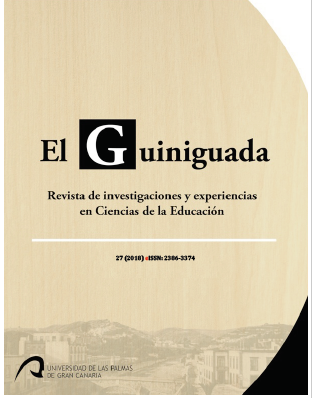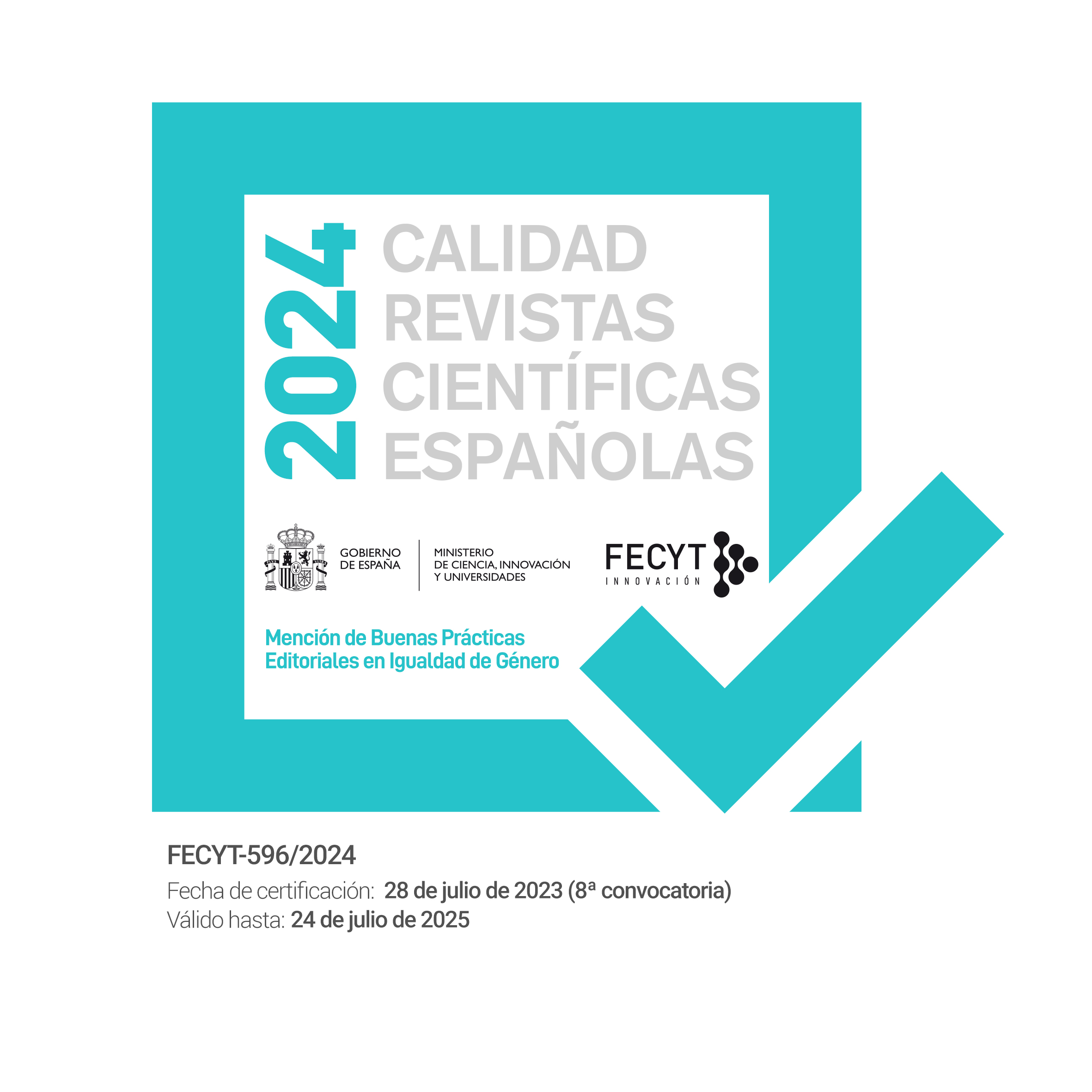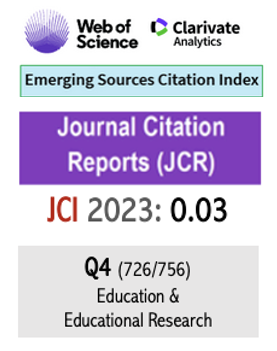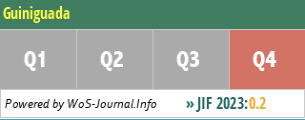Movilizar la enseñanza de ELE para aumentar la participación espontánea: estudio de caso con alumnos universitarios tailandeses. Mobilizing the teaching and learning of Spanish as a foreign language to raise spontaneous participation: A case study of Thai university students. doi 10.20420/ElGuiniguada.2018.206
Palabras clave:
Aprendizaje móvil, Kahoot, estudio de caso, Tailandia, ELEResumen
El objetivo de este artículo es presentar los resultados preliminares sobre el impacto del uso de dispositivos móviles en la participación y motivación de un grupo de ciento veintidós estudiantes de español de nivel A1 de una universidad pública tailandesa. Partimos de la premisa de que las características socioculturales propias de este contexto impactan en el proceso de enseñanza y aprendizaje, puesto que influyen en la interacción entre los discentes, en la forma de relacionarse con el docente y con los contenidos curriculares, por lo que consideramos que pueden ser responsables de las rutinas de participación de los integrantes del grupo que aprende la lengua meta. Para modificar la influencia del contexto proponemos la inclusión de dispositivos móviles con el fin de disminuir el estrés que el alumnado sufre al participar en el aula y aumentar la participación espontánea en las actividades didácticas de clase. Este artículo describe las características de esta investigación y los resultados obtenidos.
Descargas
Citas
Arnold, J. y Brown, H. D. (2000). Mapa del terreno. En J. Arnold (Ed.), La dimensión afectiva en el aprendizaje de idiomas. Cambridge: Cambridge University Press.
Arnold, J. y Julián, C. (2015). Facilitando la expresión oral y la interacción en la clase de español como L2, en Didáctica de la emoción: de la investigación al aula de ELE, MarcoELE, 21, 62-75
Bao, D. (2001). The Cultural Aspects of Communication Reluctance in the EFL Classroom: The Case of Vietnamese Students. English Teacher: An International Journal, 4(3), 232-242.
Bao, D. (2014). Understanding Silence and Reticence. Ways of Participating in Second Language Acquisition. London-New York: Bloomsbury.
Clément, R., y Kruidenier, B.G. (1985). Aptitude, attitude and motivation in second language proficiency: A test on Clément's model, en Journal of Language and Social Psychology, 4 (1), 21-37.
Chutigarn R. (2008) Cultures and Learner Behaviours: A Qualitative Investigation of a Thai Classroom. Ph.D Thesis. University of Warwick. Accesible en: http://wrap.warwick.ac.uk/2375/
Cutrone, P. (2009). Overcoming Japanese EFL Learners’ Fear Speaking. Language Studies Working Papers, 1, 55-63.
De Andrés, V. (2000). La autoestima en el aula o la metamorfosis de las mariposas, en J. Arnold (ed.), La dimensión afectiva en el aprendizaje de idiomas (pp. 105-126). Madrid: Cambridge University Press.
De Andrés, V., y Arnold, J. (2009). Seeds of confidence. Self-esteem activities for the EFL classroom. Helbling Languages.
Dörnyei, Z. (2005). The psychology of the language learner. Hillsdale, NJ: Erlbaum Associates.
Ellis, G. (1996). How culturally appropriate is the communicative approach? ELT Journal, 50 (3), 213-218.
Gunawan J. (2016). Understanding culture in higher education in Thailand. Educ Health, 29, 160-161. Accesible en: http://www.educationforhealth.net/temp/EducHealth292160-1436503_002356.pdf
Hidalgo, T. (2014): Carencias en la formación del profesorado de ELE a propósito de la diversidad de contextos de aprendizaje‖, en V Congreso Internacional de la FIAPE: ¿Qué español enseñar y cómo? Variedades del español y su enseñanza, Cuenca.
Hofstede, G. (1991). Cultures and organizations: Software of the mind. New York: McGraw-Hill
Iampramoon,T. (2015). La enseñanza y el aprendizaje de español como lengua extranjera en Tailandia: expectativas de profesores y motivaciones de alumnos. Tesina de máster. George Mason University, Virginia.
Jackson, J. (2002). Reticence in second language case discussions: anxiety and aspirations. System, 30(1), 65-84.
Jackson, J. (2003). Case-based learning and reticence in a bilingual context: perceptions of business students in Hong Kong. System, 34(1), 457- 469.
Kang, S. J. (2005). Dynamic emergence of situational willingness to communicate in a second language. System, 33: 277-292.
Liu, M. (2005a). Causes of Reticence in EFL Classrooms: A Study of Chinese University Students. Indonesian Journal of English Language Teaching, 1: 108-124.
Liu, M. (2005b). Reticence in Oral English Language Classrooms: A Case Study in China. TESL Reporter, 38(1), 1-16.
Liu, M. (2006). Reticence in Oral English Classrooms: Causes and Consequences. Asian Journal of English Language Teaching, 16: 45- 66.
Liu, M. y Jackson, J. (2009). Reticence in Chinese EFL Students at Varied Proficiency Levels. TESL Canada Journal, 26(2), 65-81.
Liu, N. F. y Littlewood, W. (1997). Why do many students appear reluctant to participate in classroom learning discourse? System, 25(3), 331- 384.
López Moreno, J. C. (2010). Relación entre cultura nacional y liderazgo organizacional, Tesina de Máster, Instituto Politécnico Nacional, México.
Mendoza Puertas, J. D. (2017). Superando la renuencia a hablar en las aulas coreanas de ELE. La opinión del estudiante universitario. Tonos, 33, 1-27.
Ramos Cuevas, P. (2014). La situación actual de la enseñanza del español en Tailandia, en Actas de VIII Congreso de la Asociación Asiática de Hispanistas
Rocca, S. (2015). iPadding sixth graders to impact language learning: An empirical mobile study. The IALLT Journal 45 (1),24-43, http://ialltjournal.org/index.php/ialltjournal/article/view/65/56
Rodriguez, J. M. (2015). Integración afectiva y efectiva de la tecnología en los cursos de ELE y la formación de profesorado, en Didáctica de la emoción: de la investigación al aula de ELE, MarcoELE, 21, 156-171
Rubio-Alcalá, F. (2015). La autoestima y la ansiedad en la clase de español como lengua extranjera, en Didáctica de la emoción: de la investigación al aula de ELE, MarcoELE, 21, 47-61.
Shimizu, J. (2006). Why are Japanese Students Reluctant to Express Their Opinions In the Classroom? The Hiyoshi review of English studies, 48, 33-45.
Srivoranart, P. J. (2009). Problemas de fonética española de los alumnos tailandeses. Foro de profesores de español como Lengua Extranjera, V.
Srivoranart, P. J. (2010). Análisis contrastivo de los refranes de dos mundos: refranes españoles – refranes tailandeses, Interlingüística XXI, Universidad de Valladolid, 2010,453-464.
Srivoranart, P. J. (2011). El proceso de aprendizaje de ELE por parte de alumnos tailandeses: condicionantes lingüísticos y culturales, Tesis doctoral. Universidad de Alcalá, Madrid. Accesible en: : http://www.mecd.gob.es/dctm/redele/Material-RedEle/Biblioteca/2013-bv-14/2013_BV_14_04Pempisa-%20Srivoranartpdf?documentId=0901e72b8153cb81
Srivoranart, P. J. (2016). Enseñanza adaptada al estilo de aprendizaje de los alumnos: estilo reflexivo y actividades para desarrollar el pensamiento crítico. Actas de XXV Congreso Internacional ASELE
Soo, R. S y Goh, H. S. (2013). Reticent Students in the ESL Classroom. Advances in Language and Literary Studies, 4(2), 65-73.
Tsui, A. B. M. (1996). Reticence and anxiety in second language learning, en K. M. Bailey y D. Nunan (Eds.), Voices from the Language Classroom. Cambridge: Cambridge University Press.
Yuenyong, J., y Yuenyong, C. (2012). Connecting between culture of learning in Thai contexts and developing students’ science learning in the formal setting. Procedia-Social and Behavioural Sciences (46), 5317-5378.
Publicado
Cómo citar
Número
Sección
Licencia
El Guiniguada se distribuye en abierto bajo una licencia Creative Commons Reconocimiento–NoComercial–SinObraDerivada 4.0 Internacional. Permite pues que los autores/as retengan, sin restricciones, los derechos de autoría así como los de publicación y difusión (esta última en una web personal o en un repositorio institucional). Igualmente, los artículos pueden ser descargables y compartirse siempre que se reconozca la autoría, que no se realicen cambios y que no se utilicen comercialmente (CC BY-NC-ND). En los números anteriores a 2020 los derechos de autor/a eran transferidos a la Revista, pero desde el Volumen 29 (2020) se aplica la política de derechos de autoría actual.
La Revista proporciona por tanto un acceso abierto inmediato a su contenido basado en el principio de que ofrecer al público un acceso libre a las investigaciones ayuda a un mayor intercambio global de conocimiento, de acuerdo con la definición BOAI de acceso abierto. Los autores/as no pagan por publicar en El Guiniguada.
El destinatario principal de esta publicación es la comunidad científica en general. No obstante, dado el interés social de los temas vinculados con la educación, El Guiniguada es consciente de la previsible proyección general que sus volúmenes puedan tener. Su acceso abierto permite, igualmente, el conocimiento libre y general de su contenido.
Quienes publiquen en esta revista aceptan pues los términos siguientes:
- Conservarán sus derechos de autoría y garantizarán a la revista el derecho de primera publicación de su obra, el cual estará simultáneamente sujeto a la Licencia de reconocimiento de Creative Commons que permite a terceros compartir la obra siempre que se indique su autoría y su primera publicación en esta revista. Asimismo, se indica que no se puede hacer un uso comercial de la obra; tampoco está permitido su uso derivado.
- Podrán adoptar otros acuerdos de licencia no exclusiva de distribución de la versión de la obra publicada (p. ej.: depositarla en un repositorio institucional o publicarla en un volumen monográfico) siempre que se indique la publicación inicial en esta revista.
- Podrán difundir su obra a través de Internet (p. ej.: en archivos telemáticos institucionales o en los perfiles académicos o profesionales de los autores...) antes y durante el proceso de envío, lo cual puede producir intercambios interesantes y aumentar las citas de la obra publicada. (Véase El efecto del acceso abierto).
Asimismo y de acuerdo con la política de acceso abierto BOAI, todo el contenido está disponible gratuitamente sin cargo para el usuario o su institución. Los usuarios pueden leer, descargar, copiar, distribuir, imprimir, buscar o vincular los textos completos de los artículos, o usarlos para cualquier otro propósito legal, sin solicitar permiso previo del equipo editorial o de la autoría.
















